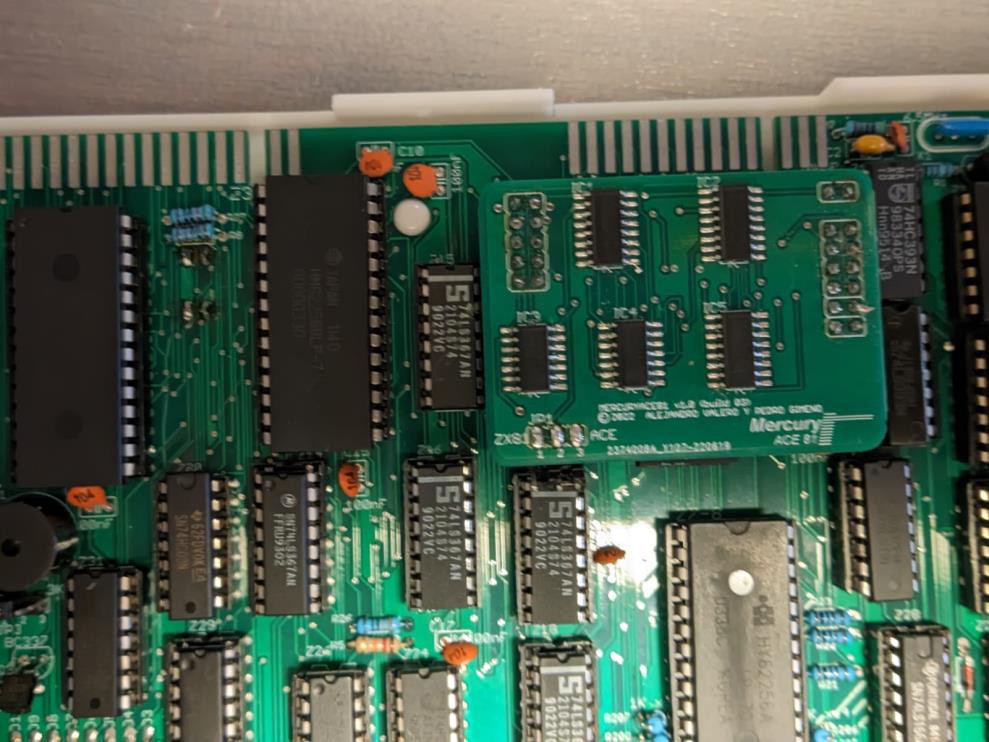Mercury Ace, not just a Jupiter Ace clone
Launched in 1982, Jupiter Ace is one of the least known personal computers of the domestic computing era. Even thought its commercial life was short and it never achieved the success of other contemporary system, those of us who saw the raise of personal computing in the 80's remember the Jupiter Ace as the machine with a novel approach, since it was based on FORTH instead of BASIC. Nowadays, more than four decades after, I've decided to create a clone which is aesthetically as close as possible to the original, without getting to the point of being an exact copy, by getting an understanding of the hardware to the point of allowing me to make modifications that add more power to it, and more importantly, to learn along the way.
The result is a machine that preserves the original aesthetics (the case could even be used with an original motherboard) but with many optional enhancements.
The Mercury Ace has been developed with consent from the current trademark owner (Paul Andrews).
I did not start from scratch, of course. Grant Searle has a version of the PCB in his web, which is practically identical to the original Jupiter Ace PCB.
The schematics were published by Bodo Wenzel and modified by Isidro Nuñez Blanco de Arenas.
The initial case design was made by Cees Meijer, who very kindly provided the 3D files that let me modify it to make it mach the original machine more accurately.
Jupiter Ace History and Specifications
Created by Richard Altwasser and Steven Vickers, two ex-employees of Sinclair Research, the Jupiter Ace stood out for its technical specifications and its minimalistic design. Equipped with a 3.25 MHz Zilog Z80A, 3 KB of RAM and 8 KB of ROM, the Jupiter Ace was not especially powerful, but what made it unique was its FORTH programming language. The FORTH language was not very popular, but it's much more efficient than BASIC. Furthermore, unlike its "spiritual predecessor", the ZX81, Jupiter Ace counts with hardware dedicated to video generation, allowing the user to take the most advantage of the 3.25 MHz of the Z80.
Unfortunately, the Jupiter Ace was not a commercial success, and the company behind its development, Jupiter Cantab, ceased trading in 1983. However, the small community of enthusiast formed around the computer has kept its spirit alive, developing emulators, tools and hardware projects in the following years.
The Cloning Project
The project started with an exhaustive analysis of the original hardware, examining the schematics and interpreting each part. A detailed analysis of the circuit can be found in the clone's repository (https://codeberg.org/wilco2009/Mercury_Ace), where you can also find all the information necessary for building it.
The Mercury Ace project is sponsored by PCBWay. The high quality of their boards, the speed of manufacturing and shipping, and their high-tech process have greatly helped us achieve our goals.
During development, to facilitate building by hobbyists, through-hole components have been used almost exclusively in the motherboard.
Giving power to the Mercury Ace (the Add-Ons)
Ace81

While studying and learning the Jupiter Ace's circuit, comparisons with the ZX80/81 were unavoidable. It's not by chance that the creators of the machine were engineers in Sinclair Research during the development of said computers.
We, as a team, had a very fresh understanding of the ZX81 inner workings thanks to the recent development of a clone of this machine (https://github.com/wilco2009/zx80-81-Double-Clone).
Both ZX80 and ZX81 need a big percentage of CPU time to collaborate with the hardware in the generation of video, leaving approximately 25% of the time effectively available for executing other code.
FORTH is an efficient language compared to BASIC, but what really makes the Jupiter Ace stand out over the ZX81 is that the Ace does not need to spend a single CPU cycle in video generation, making...
Read more » wilco2009
wilco2009